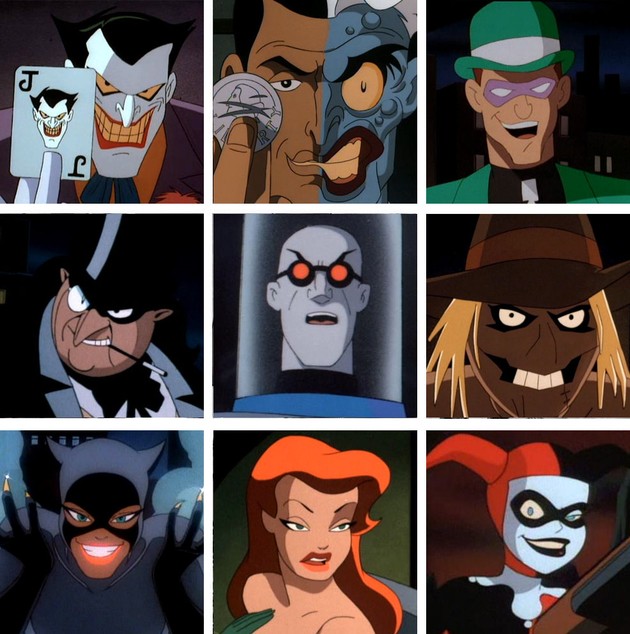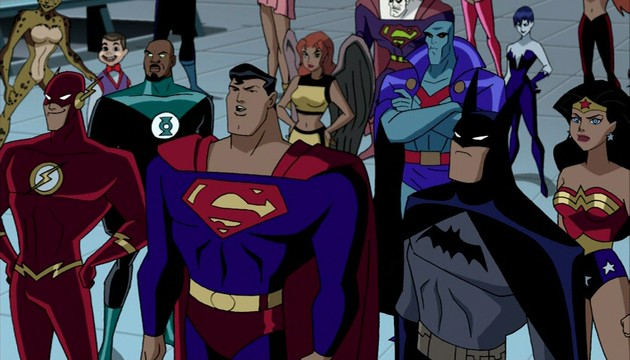With a character that’s been around for 75 years in mainstream media, Batman has seen more iterations than most. One of the best and longest-lasting versions was made by Paul Dini and Bruce Timm, “Batman: The Animated Series.” It launched in 1992, following on the heels of “Batman Returns.” That movie seems to have darkened the tone of the cartoon, making it more a psychological exploration of Batman than previously seen. That’s a depth that’s always been in the comic books, but is hard to capture with a limited amount of screen time.
They plumbed those depths even further with Batman’s rogues, making previously laughable villains like Mr. Freeze into tragic figures. Villains and allies who hadn’t been seen in animation before, but were essential to giving Batman the depth he needed to sustain years of a cartoon series. Poison Ivy, Clayface, Ra’s Al Ghul, Two-Face, Bane, Nightwing and a new Robin. None had been included in a cartoon before “Batman: The Animated Series.” They gave Alfred Pennyworth life and personality, and finally got the relationship between Commissioner Gordon and Batman right. Paul Dini even created a few new characters, most notably Harley Quinn. She started out being a sidekick for the Joker, but ended up with a life of her own that’s made her a favorite in the comic books and video games.

Much of the credit for the success and life of these characters comes thanks to Andrea Romano, who cast the voice actors for the series. Kevin Conroy as Batman became my Batman. For all that I liked about Christian Bale’s Batman, ever y time he talked I winced. Not just because I felt sympathy for his larynx, but because it wasn’t Kevin Conroy. He brought a billionaire playboy’s lightness to Bruce Wayne, and a badassitude to Batman that I hadn’t seen before. More surprising was a Joker voiced by Mark Hamill, who became my new standard to measure Jokers by. Looking at the extensive voice cast, from Bob Hastings’ Commissioner Gordon to Richard Moll’s Two-Face and Diane Pershing’s Poison Ivy, they’ve all become the voices of the characters for me. If I’m reading a comic book that has Penguin in it, it’s Paul Williams I hear. Not the “Waugh-waugh!” of Burgess Meredith. Not the growl of Danny Devito. Paul Williams.
The writers and producers of “Batman: The Animated Series” had character arcs not just for Batman, but for the other heroes and villains on the show. They introduced Harvey Dent as the district attorney and a friend of Bruce Wayne. We saw a dark side to his character well before he was ever scarred with acid, becoming Two-Face. We see the pain that Bruce Wayne has at losing his friend, along with the superheroing that Batman needs to do to stop him. In the early 1990s, it was unthinkable to spend that much time developing a villain, but in order to have it be a Two-Face that we care about, it was vital that we knew him. I’ve always found it funny that “Batman Forever” had a Two-Face more cartoony than the actual cartoon. If Joel Schumacher had turned to “Batman: The Animated Series” for inspiration instead of…wherever he found it, maybe his two Batman movies wouldn’t have sucked so hard. After you’ve seen and heard Michael Ansara’s Mr. Freeze, Arnold Schwarzenegger is an insult to the character.
“Batman Forever” had a Two-Face more cartoony than the actual cartoon.
The visuals for the series were also groundbreaking. Using the 1940s Max Fleischer Superman cartoons as a touchstone, they made a series that will end up being timeless. There’s a mishmash of time periods that somehow worked. Gotham City is patrolled by police blimps, and the cars on the street are Studebakers. They have computers and sophisticated technology, but they watch black and white television. The visual tone of the series had animators working against backgrounds painted on black boards, instead of the usual white. Going back and rewatching “Batman: The Animated Series” now, there’s a slowness to the animation, but also a film-like fluidity that other TV cartoons lacked.
“Batman: The Animated Series” transformed into “The New Adventures of Batman and Robin,” and then “The New Batman Adventures.” Over the course of these series, you saw Batman go from a loner to having Robin as a permanent partner, to having Robin leaving the nest (ha!) and becoming Nightwing. Batgirl goes from being Commissioner Gordon’s daughter to a Batman standin as Batgirl to a full partner. A new, younger Robin comes into the Batcave in the final season. All of these changes happen organically, and even decades later, the series works best when viewed sequentially to see the growth of the characters. The Batman family is bigger than to Nightwing, Batgirl, and Robin. Commissioner Gordon is a fully-fledged character, and we see him as the leader and administrator of the Gotham City Police Department for the first time. Alfred Pennyworth is an essential part of every scene that takes place in Wayne Manor or the Batcave. This was the first time any iteration of Batman got this right, and I loved it.
“Batman: The Animated Series” opened the doors for other DC Comics cartoons. “Superman: The Animated Series” launched in 1996, and inspired a redesigned, “streamlined” look for the Batman characters. The eventual crossover event between Batman and Superman bridged three episodes of their respective cartoons and was eventually released as “The Batman/Superman Movie.” Sadly, I’m pretty sure it’s better written and well-acted than anything we’ll see in 2016 from Zach Snyder. We saw the dark future of Gotham City in “Batman Beyond,” pulling some ideas from comic books and others from show creators to make a rich series that had Bruce Wayne chilling in the Batcave and a new avatar doing the crimefighting on the streets. There were a few spinoffs that I didn’t watch, “Static Shock” and “The Zeta Project,” but each has their passionate fans.

My personal favorite of the spinoffs was “Justice League,” which eventually became “Justice League Unlimited.” You had the trinity of Superman, Batman and Wonder Woman. Flash was still pretty much Flash, but funnier and faster than we’d ever seen him before. Martian Manhunter, a favorite from the comic books who hadn’t been in any television series or movie before, brought power and pathos to the team in equal measures. In the series he was called by his name, J’onn J’onnz, almost never the more cartoony “Martian Manhunter.” These choices were all what I expected. Then two curveballs: Hawkgirl instead of Hawkman, and the Green Lantern was John Stewart instead of Hal Jordan. Initially I was skeptical of both, and eventually both became some of my favorite characters.
These spinoffs were headed up by the same creative teams, and most used the same voice talent and were in similar animation styles. That run of cartoons, from 1992 until 2007, has become my measure of what makes for a good DC Universe movie or television show. Nothing’s quite measured up to it since. I’m envious of the Marvel Cinematic Universe that started with “Iron Man,” reached one high point with “The Avengers,” and has grown to the point where they have “Guardians of the Galaxy” and “Ant-Man.” Even though WB and DC Comics have an impressive slate of films in the works, I know that even with my high hopes, I know I’ll come away disappointed. For Marvel fans and casual fans, the Cinematic Universe is becoming their definitive version of those characters. For me and others of my generation, we’ll watch a DC Comics movie on the big screen and then think, “well, it’s okay, but not as good as Batman: The Animated Series.” Is it comparing apples and oranges? Sure. But those are some damn good apples.